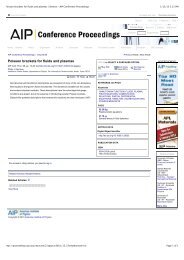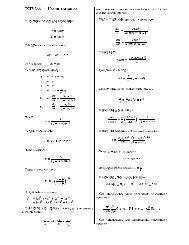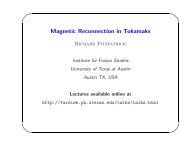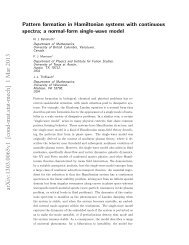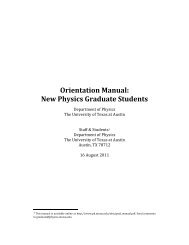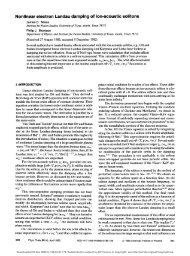Magnetic Fields and Magnetic Diagnostics for Tokamak Plasmas
Magnetic Fields and Magnetic Diagnostics for Tokamak Plasmas
Magnetic Fields and Magnetic Diagnostics for Tokamak Plasmas
Create successful ePaper yourself
Turn your PDF publications into a flip-book with our unique Google optimized e-Paper software.
<strong>Magnetic</strong> fields <strong>and</strong> tokamak plasmas<br />
Alan Wootton<br />
Substituting this <strong>for</strong>m <strong>for</strong> ψ 1 (= -∆ 1 (r)cos(θ)∂ψ 0 /∂r) into the first order equation, Equation 6.21,<br />
gives:<br />
d<br />
dr<br />
⎛<br />
⎝<br />
2 d∆<br />
rB 1<br />
θ0<br />
dr<br />
⎞<br />
⎠ =<br />
r ⎛<br />
2µ 0 r dp 0<br />
R ⎝ g dr<br />
2<br />
− B θ0<br />
⎞<br />
⎠<br />
6.23<br />
where B θ 0<br />
= 1 R g<br />
dψ 0<br />
dr<br />
has been used.<br />
The solution of this equation gives the horizontal shift ∆ 1 of a flux surface away from the<br />
geometric axis, as illustrated in Figure 6.4. This, together with the solution of Equation. 6.22,<br />
gives us what we want. If we wanted to consider non circular surfaces, we could write<br />
∞<br />
r = r 0<br />
+ ∑ ∆ n<br />
( r)cos( nθ)<br />
<strong>for</strong> each surface. Then ψ(r) is a constant (by definition), so that<br />
n=1<br />
∞<br />
∑<br />
( )<br />
ψ = ψ 0<br />
− ∆ n<br />
( r)cos nθ<br />
n =1<br />
dψ 0<br />
dr .<br />
Figure 6.4. Displaced circular flux surfaces.<br />
58



